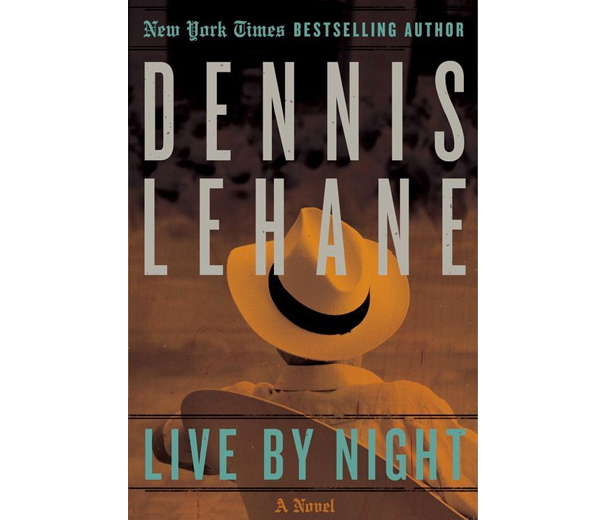Book Review: "Live by Night," by Dennis Lehane

You have to hand it to Dennis Lehane: He sure knows how to kick off a novel. In his latest, Live by Night, which comes out on Tuesday, the first page features the main character on a boat in the Gulf of Mexico, surrounded by gunmen as he’s getting fitted for cement shoes. His thoughts drift back in time to Boston where his troubles began from when he got mixed up with a classic femme fatale. You can see the movie before your eyes—and not in a cheesy, manufactured Ben Mezrich way. Lehane’s writing by its very style is cinematic, and from the first page, you feel confident that you’re settling in a good yarn, which indeed you are.
With its setting in the Prohibition era, Live by Night is Lehane’s latest foray into historical fiction, but unlike The Given Day, his gloriously sprawling epic of Boston circa 1919, this one focuses on one character. Joe Coughlin is the son of a deputy superintendent at the Boston Police Department, but a son gone bad. He styles himself an outlaw, robbing banks and speakeasies with his buddies. Needless to say, he meets the wrong woman, falls in love, and the cataclysm resulting from this start leads Coughlin to the Charlestown State Prison, where he uneasily navigates allegiances with mobsters Italian and Irish. Then upon his release, he heads off for a tumultuous life as a crime boss in Tampa. Along the way, he comes head-to-head with La Cosa Nostra, Cuban dissidents, and the Ku Klux Klan. It’s a rich, heady tale with many memorable characters.
Boston readers accustomed to having Lehane as their own may be initially disappointed when the narrative shifts to the Sunshine State, but it’s important to remember that he’s long taught at Eckerd College in St. Petersburg and spends half the year there. So he’s as at home by Tampa Bay as he is by Boston Harbor, and it’s a revelation to read Lehane fully branch out into the history, locales, and dialects of a different region. In fact, this central part of the novel is by far the longest (about two-thirds), and it’s where the book really comes alive and breathes. As Coughlin takes over a syndicate and builds it into an empire—with plenty of mayhem along the way—Lehane fleshes out a vivid 1920s Tampa, complete with cigar factories, nightclubs, and murder in the swamps. His versatility as an author here pays off, reaffirming why he’s branched out from his initial line of mystery thrillers.
There are so many good parts to Live by Night, but here’s the rub: It feels like less than the sum of those parts. At 400 pages, it’s too short. The last section is a breathless compression of too many events, and the first section poses too many questions, the most pressing being, How did the son of a police official get drawn into the underworld? Lehane does explain it, but I would have rather seen it. Rather than begin Coughlin’s tale with the character in his early twenties, Lehane could have given an extended take on his disillusioned childhood, in order to give a better feel for the motivations that Lehane threads throughout the novel. The author does such a good job showing how Coughlin evolves in Tampa that a better take on where he comes from originally would have been welcome.
Granted, it’s rare that one wishes for a couple hundred more pages in a novel, but Lehane’s writing is so brisk and colorful that surely reading more would not be a task. After all, The Given Day was an engrossing but lightning-fast 700 pages. If Live by Night had a deeper first section and stretched out closing section to match the excellent middle, Lehane could have created a vast portrait of one man and his times in a way worthy of Tom Wolfe. As it is, we have a thrill ride narrative with lots of color and twists—which does quite nicely, thank you—but it feels like an opportunity missed.
Dennis Lehane’s new novel, Live by Night, comes out Tuesday, October 2, published by William Morrow, $28.


